Lessons learned from passion-based research
Passion-based research goes by many different names; 20% Time and Genius Hour are just two different terms that describe school projects that center upon personal inquiry and innovation to spark motivation in students.
For the past several years, students in my 7th grade social studies classes have engaged in 20 Time. Based on a framework employed by such innovative employers as Google, GE, Skype, and Apple, this four-month, decentralized unit provides students with 20% of their class time, or one day per week, to develop, research, design, test, and refine a project on a topic of their own choosing.
When applied within the classroom, this opportunity is meant to increase student engagement, independence, and responsibility, while allowing me to model explicit research and design skills, to provide an environment of entrepreneurship, and to give students access to feedback from authentic, real world audiences.
Below, I share my framework for the unit, including progressive stages of design and iteration with corresponding support materials and exemplars from past years.
Project introduction, student buy-in, and the initial design
Students can be initially skeptical of the pedagogical change embodied by student-centered, abstract learning. In my traditionally survey-style US history class, students will often question how this assignment “fits” and how it will “help me in the future.” As a result, I spend time initially building buy-in among my students so they understand how this new learning, separated from specific content, will impact them and lead to success. Several TED talks and animated whiteboard videos, such as Daniel Pink’s Drive, Sir Ken Robinson’s Changing Education Paradigms, The Golden Circle, and Why We Make Bad Decisions highlight the theoretical underpinnings of 21st century learning and creative innovation, as well as the importance of trying and failing in developing a growth mindset.
Then, when I introduce the basic parameters and general rules of the unit, students can begin to see both the concrete components for which they are responsible, but also the freedom to experiment and personalize the unit.
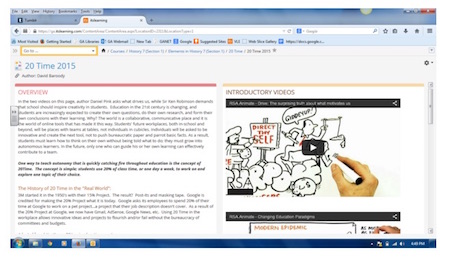
Simply put, the students must choose a topic about which they are passionate, do initial research to craft a proposal or “pitch” for their idea, then research, design, and implement a product that showcases their learning and understanding, which they then share in TED-style presentations open to the community at the end of the unit.
During my first year, piloting the project in just my own classes, students had complete control over topic, and the products reflected that freedom: students created products as diverse as a screenplay, an ankle brace for contact sports that was “camouflaged” as a sock, a visual how-to guide for building and servicing small engines, an online DIY design ‘zine, and a student-built touchscreen table.
In the second year, when the project was implemented across the entire 7th grade and incorporated by three different teachers, an additional content anchor was added to ground the project in the US history curriculum. This move added a level of rigor and challenge to the assignment, though students, through creative thinking, were still able to match their passions with the required content.
For many, this is the first time they’ve ever experienced this broad level of abstraction, and also been given organizational control for such a broad and long-term project. As a result, I employ a variety of different supports, such as this basic brainstorming guide, to support students as needed.
Keeping public track through blogging
Another means of keeping track of student progress, as well as to allow students access to a public audience, engage in on-going reflection, and build an archive of information is through blogging. Students set up blogs during the second week of the project, as soon as they have the germ of an idea, and maintain the blog once or twice a week throughout the project. Students are often assigned posting topics at the start of the project, but ultimately take over all responsibility for their blog’s content. Students receive formative feedback on their blogs using either a modified or advanced rubric. Additionally, explicit instructions about blogging introduce students to concepts of 21st century digital writing, multimodality, and graphic design.
Design Milestone 1: Pitch Day
The first milestone for students, and their first face-to-face experience with an authentic audience, occurs on Pitch Day, a few weeks into the project.
At this point, students have developed a project, devised a goal towards which to work, found basic background information to inform their study, and thought about how their final product will benefit the greater community of their middle school, the whole school, or the world beyond school. Additionally, they have built their blog to curate the information they collect and to share and publicize their work for a larger audience.
Guests at Pitch Day come from around school and beyond, and provide qualitative feedback to the students based on the information they have collected and chosen to share. I provide the guests with specific feedback forms that ask them to describe the individual projects as presented by the students:
- Are students speaking with authority about their project?
- Are they confident in expression?
I also ask them to describe any complications they, as outsiders, might foresee for the student:
- Have students thought critically about pitfalls and challenges based upon the background information they have collected?
and to describe ways they might consider approaching and rectifying those complications:
- Are students realistic in recognizing and grappling with challenges both seen and unforeseen?
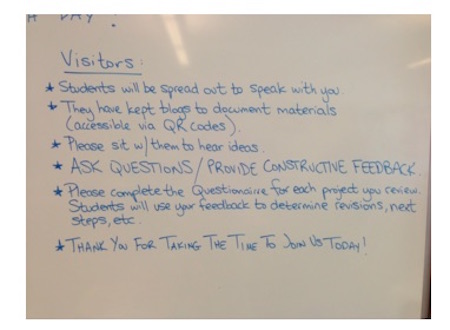
To support their brief, elevator speech-style presentations, students create a Pitch Day Cover Sheet with basic information about themselves, as well as a scannable QR code so guests can access their initial blog postings explaining the basics of their projects.
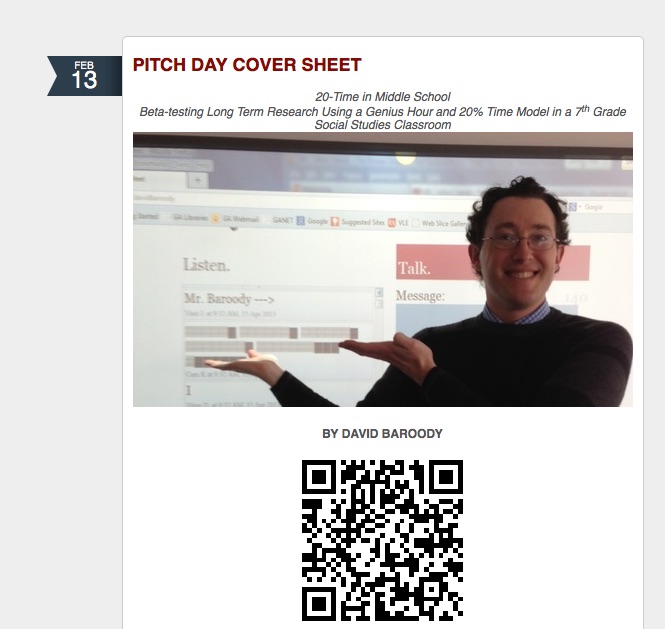
Revision, reflection, and iteration: impact-mapping
Impact mapping is the next step in processing the feedback students received on their independent projects during Pitch Day. Having generated an initial idea and pitched it to an audience, students now begin their first refinement phase, taking the feedback they received, brainstorming who, what, how, where, when, and why their work as so far envisioned will be of importance, and then identifying gaps and next steps to research in order for their projects to ultimately be whole and successful. At its core, this is an empathy activity, and one meant for students to critically reflect upon their work up to this point.
This is also the point at which my school librarian becomes an important ally, as the focus shifts to more traditional research skills, and so this offers an excellent opportunity to team-teach sections of the class.
Students spend a handful of days working on these impact maps to help identify next steps in their research process and missing information that needs to be collected.
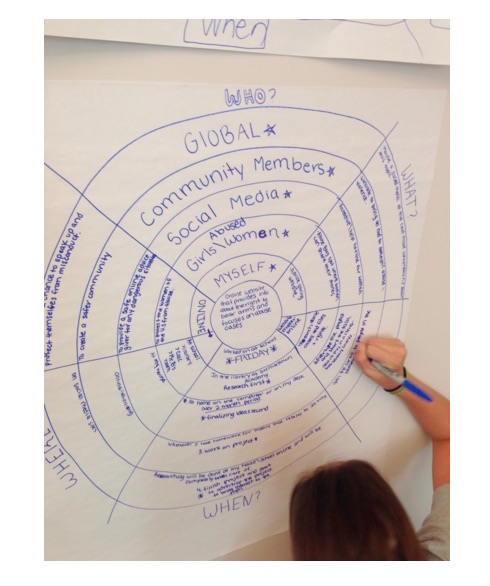
Embedded research skills
During the first and later refinement stages of 20 Time, students are presented with explicit lessons meant to facilitate their research and inform the creation of their final products. Although this unit does not necessarily look like a “traditional” research unit, it does, in fact, share all the underpinnings of the type of research historically completed by students in school. Our middle school uses the Big 6 to help frame the research process, and the students’ 20 Time projects allow for a deep, repeated application of this research cycle.
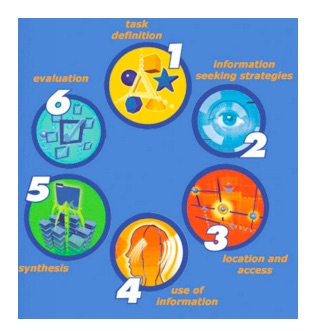
In addition to demonstrating the cyclical nature of research, students also get explicit instruction in progressively more refined skills such as keywording, generating secondary questions, managing research databases, and documenting resources.
Additionally, in response to the types of topics that may not live on “academic” databases, I have incorporated more instruction under the topic of “The Benefit of Google,” building upon the search engine’s own educational materials to help students understand and become facile in using Google to find relevant, helpful information.
Community celebration and presentation
After several months of regular work, students complete their final products and spend time reflecting in writing on their journey before an afternoon and evening of presentations.
Because of the number of participants (100+) in past years, the ultimate Community Celebration is broken into two parts: an open, gallery-style presentation with all the students spread into the hallways of the middle school, information shared on tri-folds, and the more intimate, TED-style talks with digital presentations that are broken up into classrooms around the middle school. Both presentation media focus upon the content of the research and the product that was created, the successes the students achieved during the unit, the challenges they contended with, and what we’ve come to call the “learning curve,” the ultimate lessons that the students learned that can be applied not just to research and this class, but to their journeys as learners overall.
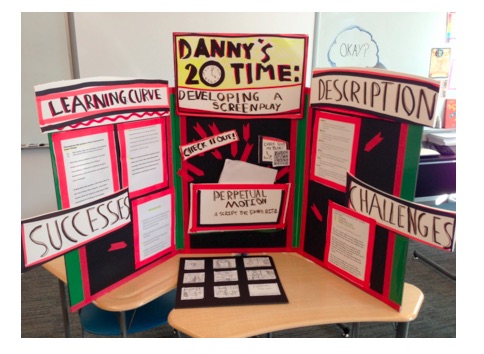
The celebration is a community-wide event, with elementary and high school students, parents, teachers, and mentors from various areas within and without the school attending to hear the students speak with authority about their chosen passion and the work completed. Last year, we had more than 300 individuals attend this celebration and support the students in the great work that they did.
This culminating experience is especially important as the students are not just creating something for teacher consumption and its corresponding grade. Instead, they are speaking as experts to a critical, though supportive, audience.
Lessons learned
I originally created the 20 Time project at my school to pilot a type of research that complemented what had traditionally been done, but that additionally provided students with autonomy over their learning, mastery of their chosen topic and subject, and purpose to forge ahead despite foreseen and unforeseen difficulties and challenges. Furthermore, the unit provided students a broad intellectual space and a long period time to break up and organize into manageable chunks, building towards a static due date. Finally, it asked students to step outside their comfort zones, repeatedly, to communicate effectively with others, collaborate with experts inside and outside of school, and to practice an innovative and creative mindset to accomplish lofty personal goals.
In speaking of the experience, students said:
- “Working in a group can be a struggle, as I now know very well, but I also think the fact that our group was so challenged in 20 Time was a good experience that made us all stronger.”
- “[A] substantial success I had was creating a focus group to get feedback for my touch-table build.”
- “Even though I had some ups and downs, I was really proud of being focused over time and working towards my goal.”
- “Our biggest challenge of creating this project was putting the whole thing together. We were a bit confused on what we should do to start it… but in the end we tried different methods, threw some out, and finally found something we were both really happy with and proud of.”
In terms of my own take-aways, what I’ve learned can be simplified into three points:
First, innovative thinking can be uncomfortable for all stakeholders.
This unit was and continues to be an uncomfortable prospect for me and other teachers, as it requires us to give up a large level of control within the classroom, knowing, as I tell my own students, that “failure IS a very real option.” Students, too, feel this discomfort, which is magnified as this is often one of the first large, decentralized independent research projects that they have undertaken in middle school.
Second, identifying what you need to know and asking the right questions to find that information can be difficult.
In our digital, instant-access world, students have become too accustomed to finding information immediately, and working to break down a complicated problem and tackle its component parts is often a foreign experience.
Third, despite these two previous struggles, passion builds student engagement.
Because they were personally invested in their work, students were willing to devote long hours to researching, designing, testing, iterating, and repeating to achieve success. Additionally, they felt that their ideas were honored and magnified in ways that they had not been previously, and they greatly appreciated the new avenue for building their own voices.
Despite the time, effort, and work this unit presents, it has quickly grown into a touchstone for 7th graders at my school, and each year becomes a point for students to celebrate the important learning they undertake as young adolescents.
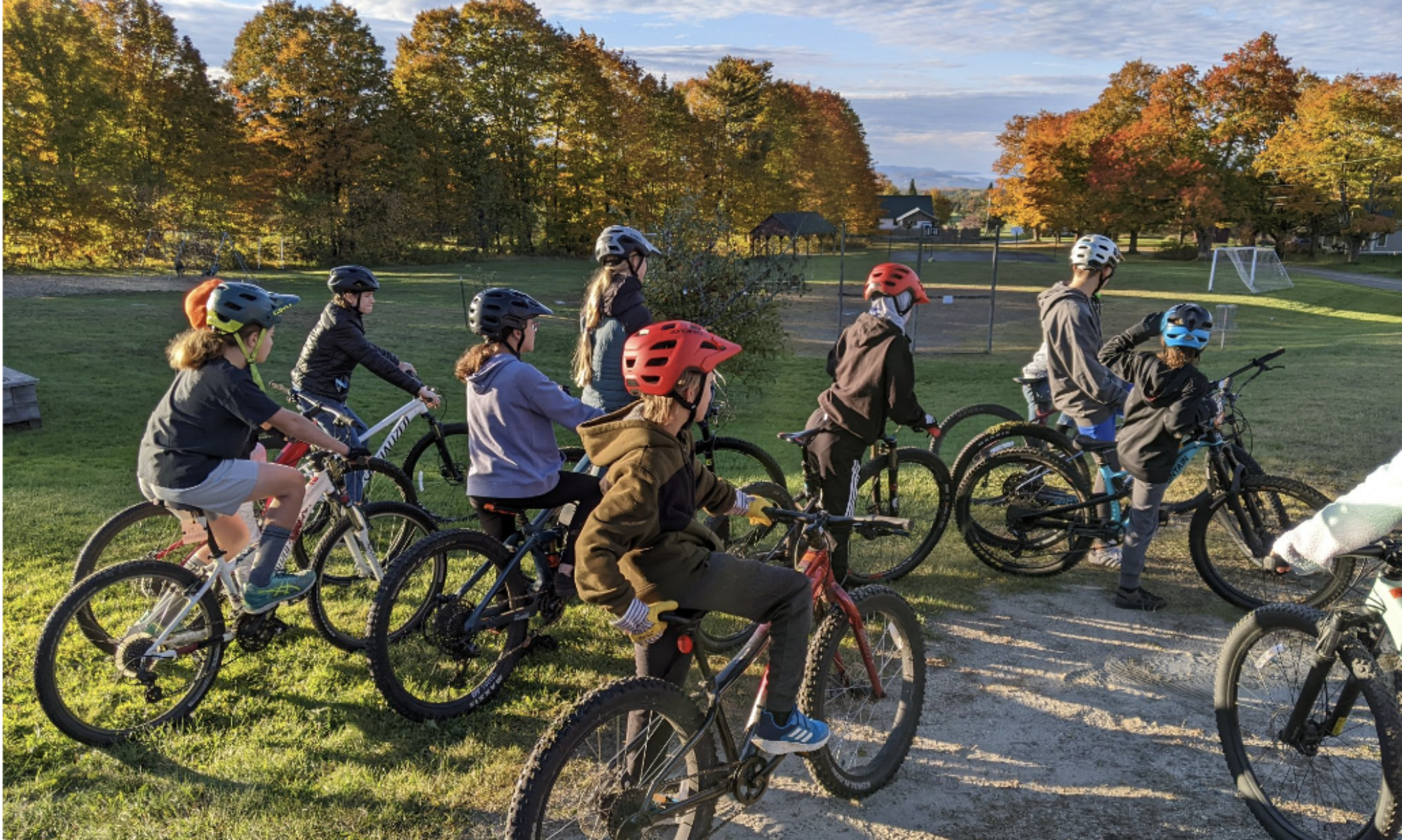

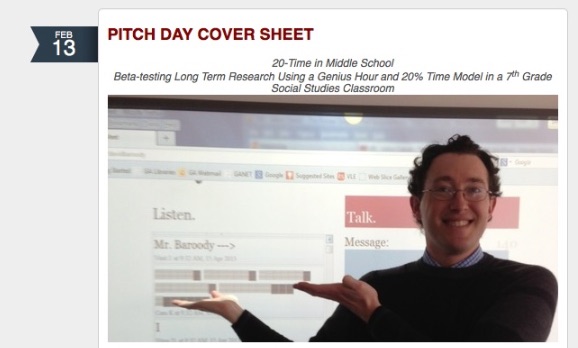
20% time in the middle school classroom: lessons learned by @dave_baroody https://t.co/U5g5dMda5W https://t.co/0gUcnOVOmp
20 time in the middle school classroom https://t.co/IqVxHmErhH via @innovativeEd
RT @innovativeEd: 20% time in the middle school classroom: lessons learned by @dave_baroody https://t.co/U5g5dMda5W https://t.co/0gUcnOVOmp
https://t.co/SillGIlbK4. Awesome video about divergent thinking
RT @innovativeEd: 20% time in the middle school classroom: lessons learned by @dave_baroody https://t.co/U5g5dMda5W https://t.co/0gUcnOVOmp
RT @innovativeEd: 20% time in the middle school classroom: lessons learned by @dave_baroody https://t.co/U5g5dMda5W https://t.co/0gUcnOVOmp
An amazing and rich description of how to do passion/personal inquiry projects with students https://t.co/ZTA3lJe53v from @dave_baroody
For the pm crowd: @dave_baroody shares rubric, resources & lessons learned from implementing Genius Hour https://t.co/DBe2jhTNtr
RT @innovativeEd: For the pm crowd: @dave_baroody shares rubric, resources & lessons learned from implementing Genius Hour https://t.co/DBe…
RT @innovativeEd: 20% time in the middle school classroom: lessons learned by @dave_baroody https://t.co/U5g5dMda5W https://t.co/0gUcnOVOmp